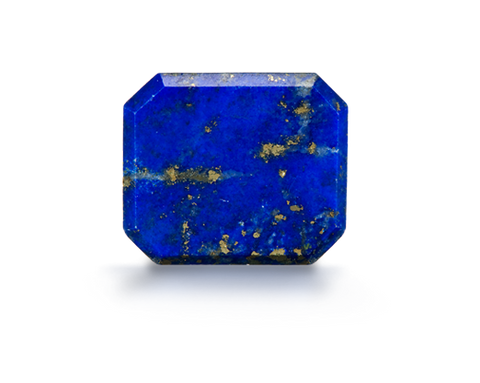LAPIS LAZULI

Lapis Lazuli (lapis: Latin for "stone" and lazuli is the genitive form of the Medieval Latin lazulum, which is taken from the Arabic lāzaward, from the Persian lāzward, the name of a place where lapis lazuli was mined - as a whole it means "stone of Lāzward") is a rock largely formed of the mineral lazurite.
Lapis lazuli is a relatively rare semi-precious stone that has been prized since antiquity for its intense blue colour, which is due to the presence of the S3- radical anion in the crystal. An electronic excitation of one electron from the highest doubly filled molecular orbital into the lowest singly occupied orbital results in a very intense absorption line. Most lapis lazuli contain calcite (white), sodalite (blue) and pyrite (metallic yellow).
Lapis lazuli was being mined in Badakhstan province of Afghanistan as early as the 3rd millennium BC, and there are sources that are found far east in the region around Lake Baikal in Siberia.
Trading in the stone is ancient enough for lapis jewellery to have been found in (3300-3100 BC) Predynastic Egyptian and ancient Sumerian sites, and as lapis beads at Neolithic burials in Mehgarh, the Caucasus and even as far from Afghanistan as Mauritania.
In addition to the Afghan deposits, lapis has been extracted in the Andes, Siberia, Angola, Argentina, Burma, Pakistan, Canada, Indian and in the USA in California and Colorado. In ancient Egypt, lapis lazuli was a favourite stone for amulets and ornaments such as scarabs.
Cleopatra used powdered lapis as eye shadow. In the Epic of Gilgamesh; the oldest known story in human history, lapis lazuli is referenced several times. Lapis has also been used in the Taj Mahal in India.
